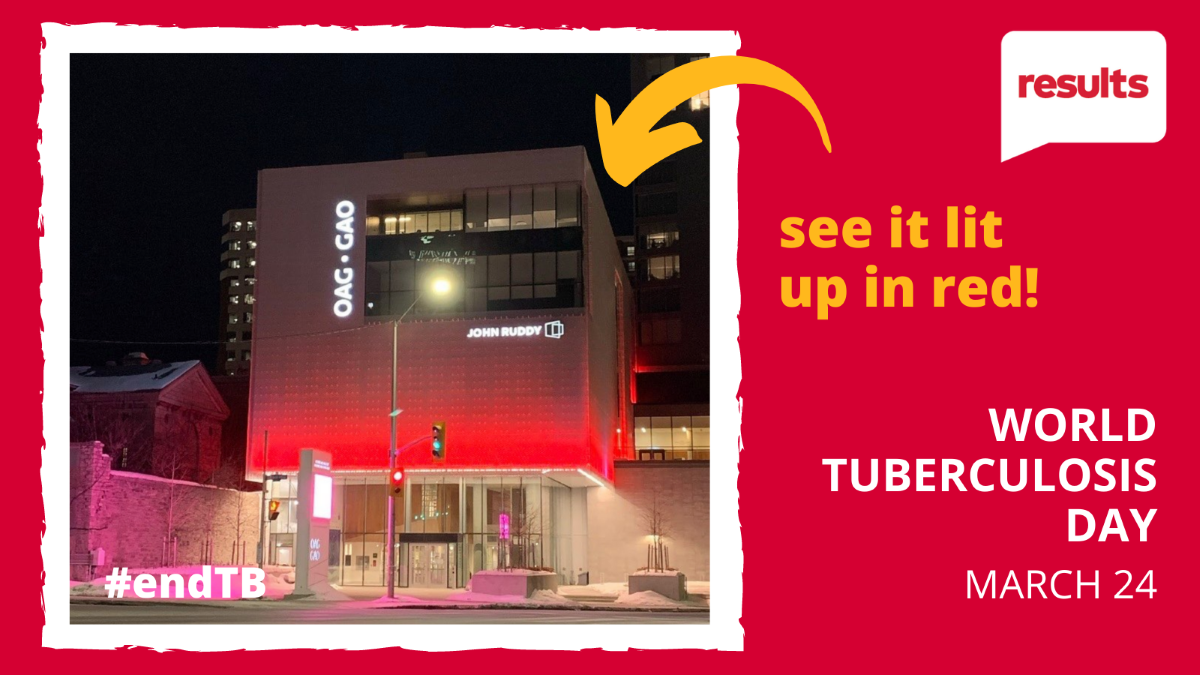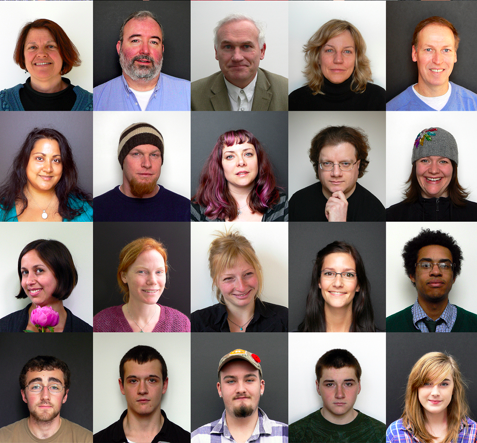
Ottawa Art Gallery Glows Red for World TB Day
On March 24th, 2021 the Ottawa Art Gallery, (OAG) in partnership with Results Canada, will light up red at sundown to mark World Tuberculosis Day. It will join a record number of landmarks and buildings across Canada lighting up red in order to raise awareness of TB, a disease that kills 4,000 people every day.
“We hope this small gesture will help draw attention to the impact that TB has on vulnerable populations across our region and across Canada and highlight the importance of access to health services,” said Alexandra Badzak, Director and Chief Executive Officer of the Ottawa Art Gallery.
TB is a potentially serious disease that mainly infects the lungs but is often invisible in wealthy western countries. “There’s an assumption that we eliminated TB a long time ago,” Norm Filiol, a volunteer with Results Canada, said. But that is not the case, in Canada or anywhere else. In 2018, 10 million people fell ill with TB, and 1.5 million died from the disease—mostly in low and middle-income countries. Low-income communities in Canada still feel the effects of TB.
In Canada, progress towards eliminating TB has stagnated for over a decade. Indigenous (especially northern) and immigrant communities bear a disproportionately high burden of TB. Disease incidence in Canada’s Inuit communities is over 290 times higher than in the non-Indigenous population, according to Results Canada.
Results Canada is an advocacy organization with the goal of eliminating poverty worldwide. Norm Filiol, a volunteer with the organization, explained why Results works for the eradication of TB with two important connections between health and poverty.
“It’s not a disease that’s effecting western people that much, and especially not wealthier people.” Filiol said. When it does affect the west, Canada included, it affects poor communities sharing small spaces which aid in transmission. And the drugs that cure TB are expensive. In Canada, this treatment (which can reach up to 800 USD) is covered. In other countries, the cure is much harder to come by.
The second vital connection between health and poverty works in the other direction. “You need healthy people to eradicate poverty.” Filiol explained. It is one of the main pillars that Results Canada focuses on, along with education and financing. Healthy people around the world are better able to learn, work, and care for themselves and for each other. As TB is one of the most pressing health problems in poor communities and nations, it is one of the biggest barriers to eliminating poverty. “In order to eliminate poverty in those countries we have to be able to eliminate tuberculosis.” Filiol said.
Canada does not have a national strategy to combat TB either at home or abroad, and part of Result’s Canada’s work is in raising awareness about how important and pressing the problem is, Filiol said. World TB Day is a large part of this. But due to the COVID-19 pandemic, the risk of TB worldwide is rising quickly and the work to stop it is increasingly important.
Before COVID-19, TB had the highest mortality rate of any infectious disease worldwide. But the major international response to the pandemic has given the TB epidemic room to grow. Both COVID-19 and TB are airborne diseases carried through infected droplets, and both have similar treatments (including ventilators in serious cases). This means resources that would normally be used to fight TB have been diverted to respond to the crisis at hand, making it more difficult for people with TB to access essential health services.
Furthermore, lockdowns have prevented the timely diagnosis and treatment of TB. The Global Fund to Fight Aids, Tuberculosis, and Malaria estimates that in 2020 alone an additional half a million people have died from TB because of disruptions caused by the pandemic.
“If we were climbing a mountain before COVID-19, that mountain has now become Mount Everest,” said Madhukar Pai, the associate director of McGill International TB Centre. “This means we need to work extra hard to mitigate the damage and stay focused on TB for the long haul. Collaboration and solidarity within the TB community are critical if we are to have a hope of getting back on track.”
World TB Day is an occasion to stand in solidarity with those who have lost their lives and those who continue to suffer from TB worldwide, as well as raise awareness in the fight against the serious infectious disease. As the world focuses on the fight against COVID-19, World TB Day shines bright red spotlights on a centuries-old epidemic that lost its global focus and, as a result, will undoubtedly regain its place as the world’s most dangerous infectious disease.







